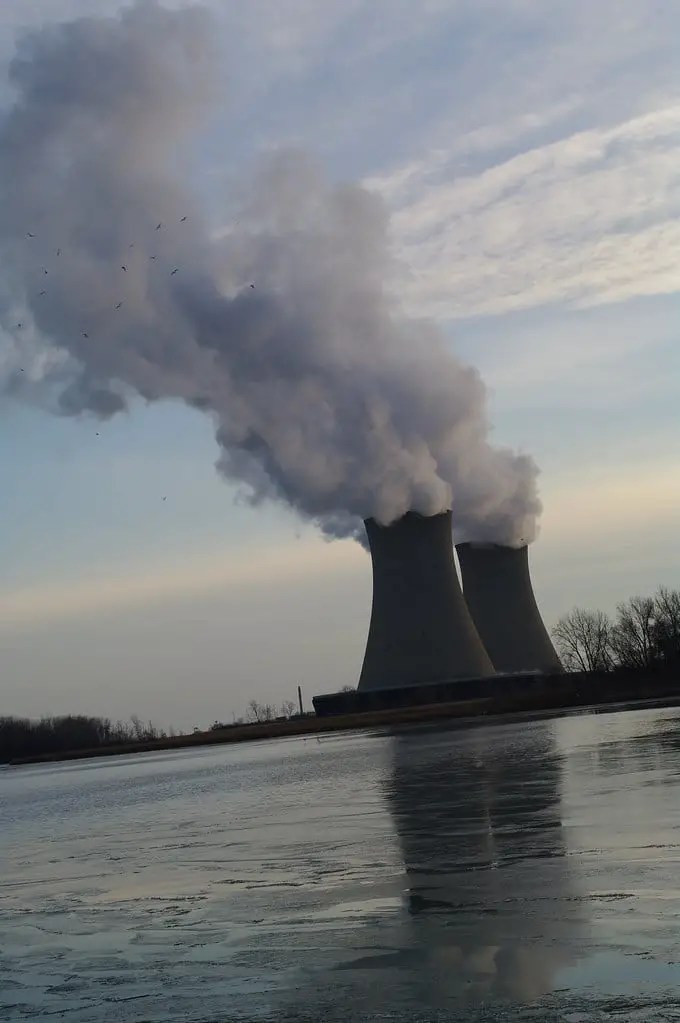Energy powers our modern world in countless ways, from lighting our homes to fueling transportation and powering industries.
Primary energy sources include both renewable options like solar and wind power, as well as non-renewable sources such as fossil fuels and nuclear energy – each playing a crucial role in meeting global energy demands.
The quest for sustainable energy solutions has led to remarkable innovations in how we harness and utilize different power sources.
Alternative energy technologies are advancing rapidly, offering cleaner and more efficient ways to generate electricity while reducing environmental impact.
The shift toward renewable resources marks a transformative period in energy production.
As societies balance growing energy needs with environmental concerns, understanding these various energy sources becomes essential for making informed decisions about our energy future.
Traditional energy sources continue to provide reliability while green technologies offer promising sustainable alternatives.
Wind Energy

Wind energy harnesses the natural power of moving air to generate electricity through massive turbines. It stands as the nation’s largest renewable energy source, with installations across 42 U.S. states generating enough power for over 40 million households.
Wind farms group multiple turbines together to maximize power generation. The Jiuquan Wind Power Base in China’s Gansu province showcases this approach with over 7,000 turbines producing more than 6,000 megawatts of power.
Wind energy provides one of the most cost-effective power options available today. Continuous technological advances keep improving its efficiency and reducing operational costs.
These towering turbines create zero greenhouse gas emissions during operation, making wind a carbon-free energy source. This characteristic positions it as a crucial tool in combating climate change.
Wind power’s versatility allows it to function in various settings. Agricultural lands can host wind turbines while maintaining farming operations underneath, creating dual-use opportunities for landowners.
Projections indicate wind energy’s growing importance in the global energy mix. It’s expected to surpass hydroelectric power as the leading renewable energy source by the 2030s.
Solar Energy

Solar energy is a renewable power source that harnesses the sun’s radiation to generate electricity and heat.
Solar power has become one of the fastest-growing renewable energy sources globally, with widespread adoption by governments and corporations.
The sun’s energy can be captured through various methods. Different types of solar technology include photovoltaic panels, solar thermal collectors, and concentrated solar power systems.
Photovoltaic (PV) panels convert sunlight directly into electricity through semiconductor materials. These panels are commonly installed on rooftops, in solar farms, and integrated into building materials.
Solar thermal systems use the sun’s heat to warm water or other fluids for domestic hot water, space heating, and industrial processes. This technology is particularly effective in regions with high solar exposure.
Key Benefits of Solar Energy:
- Zero emissions during operation
- Low maintenance requirements
- Silent power generation
- Decreasing installation costs
- Long system lifespan (20-30 years)
Modern solar installations often combine with backup power systems to ensure consistent energy supply during periods of low sunlight. This hybrid approach maintains reliability while maximizing renewable energy usage.
The technology continues to advance with improvements in efficiency and storage capabilities.
New developments include bifacial panels, floating solar farms, and enhanced energy storage solutions.
Geothermal Energy

Geothermal energy harnesses Earth’s natural heat from deep underground. This renewable power source can generate electricity and provide heating for homes and buildings.
The process taps into underground reservoirs of steam and hot water to power turbines connected to electricity generators.
Geothermal power plants maintain a high capacity factor, making them reliable partners for intermittent renewable sources like wind and solar.
Residential geothermal systems can reduce energy bills by 30-40% and typically pay for themselves within 5-10 years. These systems work by transferring heat between buildings and the ground.
Key advantages of geothermal energy:
- Clean and environmentally friendly
- Produces minimal greenhouse gases
- Operates 24/7, unlike solar or wind
- Creates sustainable jobs
- Utilizes existing oil and gas industry skills
The heat source comes from Earth’s core, approximately 2,900 kilometers below the surface. This makes geothermal energy a constant and reliable power source.
The U.S. Department of Energy projects significant growth potential, with capabilities to reach up to 60 gigawatts of electricity-generating capacity and power over 17,000 district heating systems nationwide.
Hydropower

Hydropower harnesses energy from flowing water to generate electricity through a renewable process that relies on the continuous water cycle. Unlike fossil fuels, it produces no greenhouse gases or air pollutants during operation.
Four main types of hydropower projects exist, each utilizing different methods to generate electricity. These include storage projects, run-of-river facilities, pumped storage systems, and offshore technologies.
A typical hydroelectric plant uses dams or diversion structures to control water flow. The moving water spins turbines connected to generators, converting mechanical energy into electrical power.
Small-scale hydropower installations provide flexible energy solutions for various needs:
- Micro hydropower: Up to 100 kilowatts
- Small hydropower: 100 kilowatts to 10 megawatts
- Large hydropower: More than 10 megawatts
The advantages of hydroelectric power include:
- Reliable power generation
- Long operational lifespan
- Low maintenance costs
- Quick response to peak demand
The technology relies on the endless water cycle to produce electricity, making it a sustainable energy source. Water used in the process returns to the environment unchanged, maintaining the natural resource.
Biomass Energy

Biomass energy comes from organic materials derived from plants and animals. These materials store energy from the sun through photosynthesis, which can be released through various conversion processes.
The most common biomass materials include wood, agricultural crops, organic waste, and animal manure. These materials can be burned directly for heat or processed into different forms of biofuels.
Wood remains a traditional biomass fuel, particularly in the form of logs, pellets, and chips.
Many industrial facilities and power plants use wood waste from manufacturing processes to generate electricity and heat.
Agricultural biomass plays a significant role in energy production. Corn, sugarcane, and soybeans are processed into biofuels like ethanol and biodiesel for transportation.
Municipal solid waste and organic materials from landfills produce biogas through decomposition. This gas can generate electricity or heat for nearby buildings and facilities.
Biomass offers several advantages as a renewable energy source:
- Reduces waste by utilizing organic materials
- Creates fewer greenhouse gas emissions than fossil fuels
- Provides a reliable energy supply
- Supports local agricultural economies
The biomass feedstock industry continues to develop new technologies and methods to improve efficiency and reduce costs in energy production.
Tidal Energy

Tidal energy harnesses the power of ocean tides to generate electricity through the natural rise and fall of ocean waters. This renewable energy source relies on the gravitational forces between Earth, the moon, and sun.
The predictability of tides makes this energy source particularly reliable. Unlike solar or wind power, tidal movements follow consistent patterns, allowing for accurate forecasting of power generation.
Two main technologies capture tidal power: tidal barrages and tidal stream systems. Tidal barrages function like dams across tidal basins, while stream systems use underwater turbines to capture energy from tidal currents.
Tidal range technology exploits the height difference between high and low tides. When water levels change, the flow drives turbines to generate electricity.
Key advantages of tidal energy:
- Renewable and clean
- Highly predictable
- Long operational lifespan
- Zero fuel costs
Limitations include:
- High initial construction costs
- Limited suitable locations
- Potential impact on marine ecosystems
- Infrastructure requirements
Global tidal energy projects continue to advance as technology improves. Several coastal nations are developing new installations to expand their renewable energy portfolios.
Wave Energy

Wave energy harnesses the power of ocean waves to generate electricity through specialized devices called wave energy converters.
This renewable energy source captures both kinetic and potential energy from moving water.
The concept originated with Japanese naval commander Yoshio Masuda, who developed early wave energy devices to power navigation lights.
His innovations included testing platforms and various conversion methods that helped advance the technology.
Wave power generation begins when wind blows across the ocean surface, creating ripples that grow into waves.
These waves contain significant energy that can be captured and converted into electricity.
Several types of wave energy converters exist:
- Attenuators
- Point absorbers
- Oscillating water columns
- Overtopping devices
Wave energy stands out for its reliability and impressive energy density. It represents one of the highest energy density renewable sources available, making it a promising option for coastal regions.
The technology works best in areas with consistent wave activity. Coastal zones with strong wind patterns typically offer optimal conditions for wave energy collection and conversion.
Nuclear Energy

Nuclear energy is a powerful and low-carbon source of electricity that generates approximately one-third of the world’s carbon-free power.
The process relies on nuclear fission, where atoms of uranium are split to release substantial amounts of heat energy. This heat converts water into steam, which drives turbines to generate electricity.
Nuclear power plants can generate enough energy to power entire cities due to their high energy density. A single nuclear facility can produce consistent power 24/7, regardless of weather conditions.
The first nuclear reactor generated electricity in 1951 near Arco, Idaho, marking a significant milestone in energy production history.
Uranium, the primary fuel for nuclear reactors, is a nonrenewable resource formed billions of years ago during star formation. Its unique properties make it ideal for sustained nuclear reactions.
Key benefits of nuclear energy:
- Minimal carbon emissions during operation
- Consistent power output
- High energy density
- Weather-independent operation
- Large-scale electricity production
Coal

Coal is a black sedimentary rock that serves as one of the most abundant fossil fuels on Earth. It forms from decomposed plant matter subjected to heat and pressure over millions of years.
Four main types of coal exist: anthracite, bituminous, subbituminous, and lignite. Each type contains different amounts of carbon and produces varying levels of heat energy.
Mining companies extract coal through two primary methods. Surface mining removes upper layers of soil and rock, while underground mining involves tunneling beneath the Earth’s surface to reach coal deposits.
As a nonrenewable energy source, coal plays a significant role in electricity generation. The process involves burning coal to heat water, creating steam that drives turbines connected to electricity generators.
Coal’s abundant supply and established infrastructure make it a widely used energy source. The United States maintains substantial coal reserves, making it a key component of the nation’s energy mix.
U.S. coal consumption peaked in 2005, using approximately 22.80 quadrillion British thermal units. Despite its widespread use, coal’s environmental impact has led many regions to seek alternative energy sources.
Oil (Petroleum)
Crude oil and petroleum products are among the world’s most important energy sources. These hydrocarbons exist in liquid or gaseous form within underground reservoirs and sedimentary rocks.
Oil is a non-renewable resource that supplies a significant portion of global energy needs. The extraction process involves drilling deep wells to access underground deposits.
Petroleum products serve multiple purposes:
- Gasoline for vehicles
- Heating oil for buildings
- Diesel fuel for heavy machinery
- Jet fuel for aircraft
- Petrochemical feedstock for manufacturing
Oil’s role in energy continues to evolve. While it remains a dominant energy source, environmental concerns and the rise of renewable alternatives influence its future in the global energy mix.
Petroleum-derived products extend beyond fuel. The manufacturing industry uses oil to create plastics, synthetic rubber, and various chemicals.
Oil contributes significantly to environmental challenges, particularly air pollution and climate change. When burned, it releases greenhouse gases and other pollutants into the atmosphere.
Modern extraction techniques include:
- Traditional drilling
- Hydraulic fracturing
- Offshore drilling
- Oil sands mining
Natural Gas
Natural gas is a powerful fossil fuel energy source primarily composed of methane (CH4). It forms deep underground from the decomposition of ancient organic matter over millions of years.
The composition of natural gas includes methane as its main component, along with smaller amounts of natural gas liquids (NGLs) and non-hydrocarbon gases like carbon dioxide and water vapor.
This energy source ranks among the cleanest-burning fossil fuels available. When combusted, it produces significantly fewer emissions compared to coal and oil.
Natural gas serves multiple purposes in daily life:
- Heating homes and buildings
- Cooking food
- Generating electricity
- Powering industrial processes
- Fueling vehicles
Natural gas is classified as non-renewable because it takes millions of years to form, and its extraction rate exceeds its formation rate. The United States utilizes natural gas as one of its primary energy sources.
The extraction process involves drilling wells into underground reservoirs. After extraction, the gas undergoes processing to remove impurities before distribution through pipeline networks to end users.
Hydrogen Energy
Hydrogen functions as a versatile energy carrier capable of storing and delivering power from various sources. Its high energy density makes it an attractive alternative to traditional fossil fuels.
Production methods for hydrogen include natural gas reforming, electrolysis, and emerging technologies like solar-driven processes. Each method offers distinct advantages and environmental impacts.
Clean hydrogen production using renewable energy sources, nuclear power, or fossil fuels with carbon capture technology can significantly reduce greenhouse gas emissions.
This makes it particularly valuable for decarbonizing energy-intensive industries. The high energy density of hydrogen surpasses that of crude oil and natural gas.
Its non-toxic nature and eco-friendly characteristics make it an increasingly important component of sustainable energy systems.
Key Benefits of Hydrogen Energy:
- Zero emissions at point of use
- Renewable production potential
- Versatile applications
- High energy efficiency
- Long-term storage capability
Current applications span various sectors, including transportation, industrial processes, and power generation. The technology continues to advance as infrastructure develops and production costs decrease.
Fusion Energy
Nuclear fusion represents a groundbreaking approach to clean energy production. This process mimics the power of stars by merging hydrogen isotopes to generate massive amounts of energy.
Fusion energy could revolutionize power generation by providing abundant, reliable, and zero-carbon electricity. The technology shows promise for industrial heat applications, hydrogen production, and carbon capture systems.
Scientists employ different methods to achieve fusion. Traditional approaches use powerful magnetic fields in devices called tokamaks.
An innovative alternative called sheared-flow Z-pinch uses plasma currents instead of expensive magnets, potentially making fusion more cost-effective.
Several technical challenges remain before fusion becomes commercially viable. Engineers must maintain extremely high temperatures and manage plasma containment effectively.
They also need to develop materials that can withstand the intense conditions inside fusion reactors.
The U.S. Department of Energy leads major research initiatives in fusion science. These programs focus on understanding matter at extreme temperatures and developing practical fusion energy sources.
Key Benefits of Fusion Energy:
- No risk of meltdown
- Zero carbon emissions
- Abundant fuel supply
- Enhanced energy security
- Minimal radioactive waste








